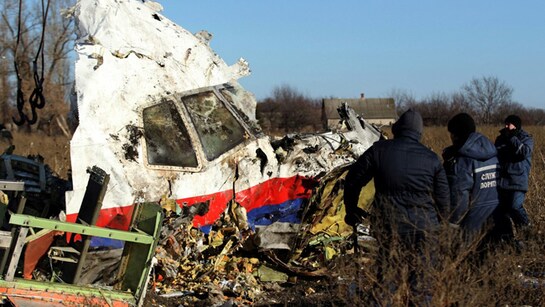How far would you go to protect a species? An interview with wildlife criminologist and National Geographic Explorer, Dr Allison Skidmore
From patrolling South Africa’s rugged plains as a ranger to going undercover in Russia’s remote forests to investigate tiger poaching and becoming a National Geographic Explorer, Dr Allison Skidmore has dedicated her life and career to investigating wildlife crime. Allison’s story is extraordinary and reveals a passion and perseverance for wildlife protection that has led her down a path that few have the opportunity to experience.

“I’ve been obsessed with animals my whole life.”, Allison shares. At just six years old, she even declared herself vegetarian, despite not fully understanding what it meant. Her childhood passion was fuelled by experiences like watching The Lion King and a transformative family safari in Botswana at sixteen. From that moment on, she was determined to find her way back to Africa.
Allison studied at the University of Colorado Boulder, USA, earning three bachelor’s degrees in international affairs, environmental science and climate science. Initially, her career aspirations were politically oriented, considering roles in diplomacy or foreign service.
But the call of Africa was stronger. She discovered a top-ranked conservation biology program at the University of Cape Town, South Africa, and saw a chance to move there: “The only reason I really went to grad school was so I could move to Africa!” she recalls.
Her early fieldwork took her to remote areas in Chizarira National Park in Zimbabwe for her master’s dissertation, studying termite mounds. But it was during this time she had her first direct encounters with poaching:
“Seeing poached elephants firsthand – it’s one thing to see it in pictures, but quite another to witness it in real life.” This experience completely shifted Allison’s focus towards her true calling in life – to put an end to the poaching and trafficking of wildlife.
After finishing her Master’s degree, she moved to Kruger National Park in South Africa, where she trained to become a ranger. However, as time went on, she began questioning the effectiveness of her approach. “The militarisation of conservation… I thought I was making a difference, but eventually I realised I was working from the wrong direction and I wanted to help in a different way.”

Allison leading a training patrol as a ranger in Kruger National Park.
After several years, life took her back to California, USA. This unexpected change forced a career pivot. “I kind of came back with my tail between my legs,” she admits, now living with her parents again.
Not one to give up, she pursued her PhD and began working as a consultant with California’s Department of Fish and Wildlife’s wildlife trafficking unit . California, with its major ports, large population centres and international traffic, has its own challenges with wildlife trafficking. Allison joined the state’s only wildlife trafficking unit, where she could use her expertise on a different front.
Her experience in anti-poaching led to consulting trips to Russia and Malaysia, where she was immersed in international wildlife trafficking issues. During her time in this role, she became increasingly aware of tiger trafficking in the U.S. “I found tiger bone wine openly being sold in San Francisco,” she shared.
She was particularly shocked by the unregulated pet tiger trade and realised that in states like Nevada, where people could buy tigers for as little as $300, the unregulated trade could feed illegal markets. This concern grew into a potential PhD topic, focused on investigating if captive tigers in California and beyond were entering illegal trade channels.

Allison was shocked by the unregulated pet tiger trade in the USA, where a tiger can cost as little as $300 in some states.
Allison was granted funding by National Geographic to pursue her PhD research, making her a National Geographic Explorer! Around two years into her PhD on the tiger trade in the US, she was invited to Russia to speak at a tiger conservation conference.
“I was the only woman who spoke at this conference, the only person speaking in English in front of all these stern Russian men!”
While there, she met an American scientist who had lived in Russia for decades and was doing research on tigers. The scientist told Allison about the complex corruption within Russia’s tiger conservation efforts, implicating a powerful family who controlled much of the tiger research and conservation in Russia, as well as controlling national parks and hunting associations.

Allison was the only woman to speak about her research at a tiger conference in Russia.
The scientist expressed concern over rampant poaching but explained that local NGOs couldn’t investigate without risking expulsion. He asked Allison if she would be willing to dig into the poaching issue.
“Basically, they needed someone to do the dirty work to find out the real facts about tiger poaching in Russia… but I don’t think he thought I’d say yes!”
With her advisor’s support and a revised proposal to National Geographic, Allison shifted her research focus to investigate Russia’s tiger poaching crisis.
Approximately 500 Amur Tigers (also known as Siberian Tigers) remain in the wild, roaming the remote and harsh landscape of East Russia. These tigers are hunted for trophies and body parts such as claws and teeth are sold on the black market for use in traditional Chinese medicine. The species faces extinction, mainly due to this poaching, but very little was known about how it was done and who was doing it.
Allison began making connections with Russian scientists and her knowledge of the culture. However, she had to be extremely cautious. “We could only talk face-to-face… I knew that phones are tapped, computers are tapped. I couldn’t talk about my research between trips,” she said, aware that disclosing her intentions would prevent her from re-entering Russia.
Allison’s work highlights the lengths researchers often go to, to uncover hidden truths in wildlife trafficking and conservation, even when facing substantial personal risks. Under the guise of studying the Amur tigers in Russia, Allison secretly investigated poaching and the illegal tiger trade over two winter seasons.
Living in remote areas without electricity or running water, she interviewed hunters and poachers, often under the watchful eye of Russian security, and gained a unique perspective and understanding into what was happening and the complex motivations behind poaching.
About 60% of poachers were driven by poverty, while another 20% acted due to human-wildlife conflict. The remaining 20% engaged in what she terms “elite poaching,” often leveraging power to escape accountability.
Allison recounted an unsettling encounter with a ranger who was caught with tiger cubs in his freezer but was let go due to his connections, a classic example of the systemic corruption that enables this devastating crime.


Hunters, some of which were also poachers, who Allison lived with during her time in Russia. She gained their trust and acquired critical information about the illegal tiger trade.
Allison’s mission took a dangerous turn when she was ultimately deported in April 2020, amidst rising COVID-19 tensions. “I was actually going to be heading out of the country when I got caught…they were setting up roadblocks because they didn’t want people moving around,” she explained.
Although she was arrested, she managed to evade significant legal repercussions by carefully hiding the research data in the cloud, which led to her deportation instead of arrest. “If they knew after I started publishing stuff, they would have absolutely arrested me,” she recalled, highlighting the risky nature of her work and its potential consequences.

Allison interviewed hunters under the guise of studying the Amur tigers in Russia, to find out more about poaching and the illegal tiger trade in Russia.
Wildlife trafficking is the fourth largest illegal activity globally, but it often goes unnoticed. Allison explained why wildlife crime is so detrimental: “It’s not just that we’re taking these animals out of the ecosystem, but doing so really destabilises ecosystems.”
She emphasised the importance of understanding wildlife trafficking not just from an individual animal perspective but as a multifaceted issue linked to climate change and other organised crime.

A tiger canine is worth up to $5000. They are often gifted to infants in China as a type of protection charm.
Allison’s latest investigative project took her to Ethiopia and Somalia in December 2024 to investigate the illegal trafficking of cheetahs for the pet trade.
Between her investigative work, Allison now teaches a course at the Montana State University which she designed and lectures in. She felt there was a lack of wildlife crime awareness in academia, pointing out that there are very few classes dedicated to this topic in the U.S. Passionate about educating others, she expressed a desire to bridge the gap between natural sciences and social sciences, arguing that understanding human values is crucial in conservation efforts.
Allison aims to integrate these disciplines to foster a more comprehensive understanding of wildlife crime and its broader consequences. Recalling her own experience in conservation biology, Allison felt that it was overly focused on hard science without addressing human perspectives, which are crucial for understanding conservation issues.
Allison’s course filled up within a day during registration! She brings together students from diverse academic backgrounds with half of the class coming from an ecology background and the other half from a criminology background.
Allison shared her advice for those interested in pursuing a career in wildlife criminology. “The path can vary depending on whether you are interested in enforcement, research or policy. Being a game warden can be a really achievable goal for many.”
However, for those leaning toward research or policy, Allison stressed the importance of education and that getting a graduate degree is absolutely essential in this field. A master’s degree is often necessary for gaining exposure to research and building credentials.
Writing skills emerge as another crucial element for success in wildlife criminology. “Being a good writer is the best skill you can have in any field you go into, especially this field.” Allison believes so much in the importance of empowering her students to communicate effectively that she threw out the final exam of her course and had the class write a research paper instead!
Allison advised that passion over money is needed to work in wildlife conservation.
“My life has taken such a different path than when I expected It’s been rewarding… but we don’t go into wildlife stuff to get rich.” (Editor’s note: within the conservation sector, pay can vary widely across the 11 Key Conservation Roles, with some roles paying much better than others).
Finally, Allison highlighted that her particular career path in undercover investigative work may not be suitable for everyone. She stressed the importance of self-awareness in handling the challenges of ethnographic work, particularly when dealing with sensitive topics.
“You have to know yourself really well and be very empathetic with people who may not have the same view as you.” It is intense and dangerous work, but people like Allison have the characteristics that make this critical work possible, providing facts and new information about illegal trade in order to inspire action and change.

Allison’s story is extraordinary and reveals a passion and perseverance for wildlife protection that has led her down a path that few have the opportunity to experience.
Connect with Allison:
 Caroline is a passionate wildlife conservationist and communicator working in the illegal wildlife trade field with the UN Environment Programme. She loves to share the stories of people doing incredible work on her blog Animals and Us and can be found under the sea, in the mountains or working with animal rescues.
Caroline is a passionate wildlife conservationist and communicator working in the illegal wildlife trade field with the UN Environment Programme. She loves to share the stories of people doing incredible work on her blog Animals and Us and can be found under the sea, in the mountains or working with animal rescues.











